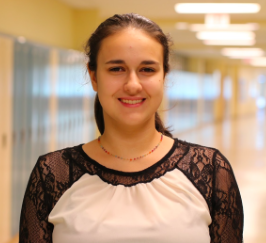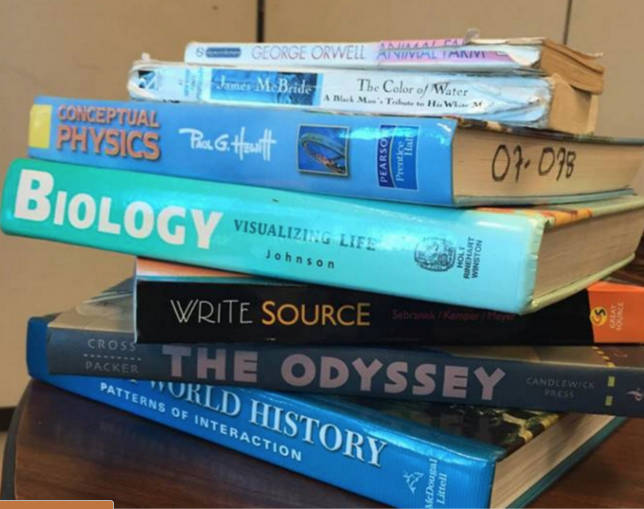Does Staples favor its STEM students?
No – Claire Dinshaw
I spend half the school day on the second floor. With four periods of social studies and English classes, I am the prototype humanities student.
Therefore, I am well briefed in the humanities vs. STEM conflict. I have heard numerous English students claim that they have been put at a disadvantage for competition against their scientific peers as a result of the Staples culture and structure.
In reality, however, humanities students are not in any way put at a disadvantage at Staples. Science, math, history and English are all different, but difference in instruction does not inherently create inequality.
Let’s start with the argument that could only be produced by a culture as pretentious and disgustingly grade sensitive as ours: the claim that the humanities department lacks a large enough selection of AP courses.
To begin, this is not even true. In total, seven AP courses are offered between the English and social studies departments in seven completely different subject areas. Although 10 are offered between the science and math departments, these 10 are only offered in six different subject areas (for example, both AP Calculus AB and AP Calculus BC overlap, meaning a student would not take both).
However, the most persistent humanities students wanting to make a case for their disadvantage would continue to persist, citing the point that it is easier for science and math focused students to earn high marks. This argument goes hand-in-hand with the claim that, although in-class essays rarely garner 100’s, unit tests in math and science can.
This point, however, ignores the fact that just because the potential is there does not mean it is probable. Getting an A+ in AP Physics C, it turns out, is not easy.
Some people refute these facts by saying that most Staples valedictorians have been STEM students, but, in reality, valedictorians are everything students — that is what makes them valedictorians. They take upwards of 10 APs in both the humanities and the sciences and score top marks in all of them.
The final point rests on the culture. The idea that our school is simply more impressed by scientific accomplishments than they are with ones that relate to the humanities has some truth to it.
However, humanities students have only one group of people to blame: themselves. How many times have you been overly dazzled by the “fancy” math student discussing how to take the derivative of [insert lengthy math equation]? How many times have you considered AP Chemistry to be impossible?
If you are anything like the thousands of other humanities students at Staples, the answer is often. You are the one getting intimidated by classes plenty of non-geniuses take. You are the one letting yourself get shut down anytime you hear “math talk.”
In reality, there is no such thing as “humanities inferiority” or “STEM superiority.”
Besides, the energy you spend complaining would be better spent mastering the subject area you could earn a Nobel Prize in someday (yes, just like AP classes, they exist for both humanities and STEM professionals. The world is not as biased as you think).
—————————————————————————————————————————–
Yes – Molly Liebergall
The plausibility of receiving an A+ on an AP English Language or A.P English Literature essay is as low as the plausibility of Odysseus’ 20 year-long return to Ithaca. To quote The Princess Bride, it’s “inconceivable.”
The reason is that an A+ is meant to represent work that is perfect or nearly perfect. As we have all been taught since Kindergarten, writing can always be improved, so trying to write a perfect essay is almost like trying to walk towards a door frame if every step you take only cuts your remaining distance in half (a little joke for you STEM kids out there).
Speaking of STEM, subjects like math and science test students on their ability to solve different types of problems. The key word here is “solve.” Mathematical and scientific problems have either one or a set of answers, so while getting a perfect score on an AP level math or science class is extremely difficult, it is possible.
This possibility for prosperity in math and science classes puts humanities students at a disadvantage. A Staples student who is considered a genius in AP math and science classes will receive A and A+ grades, while a Staples student who is considered a genius in AP English classes will very rarely, if ever, receive a perfect nine on an essay.
This double standard can cause students who are English smart but not math or science smart to hold a GPA that does not fairly portray the time and effort they have dedicated to reading and writing. In fact, the word “smart” is usually associated with someone who excels in math and science because of how much focus has been placed on these subjects, starting all the way back in fifth grade.
In the last year of elementary school, kids unknowingly set themselves on the track that would define their math futures by taking one of two leveled classes. Next, middle school drew a more defined line between different math levels, and then freshman year at Staples introduced the idea of Algebra 1, Geometry or Algebra 2, not to mention the different academic levels you could take for each class, and the students who exceeded even the “highest math” offered to their grade.
This concept of skipping subject years does not exist for humanities students. There is an explicit English course path that students must follow which does not allow them to choose classes other than English 1 or English 2 until junior year. Even then, there are only two AP classes to choose from, as opposed to the abundance of math and science APs.
When it comes down to it, the focus that STEM places on math and science courses ostracizes humanities students instead of celebrating the different ways a student can be “smart.” Humanities and STEM classes really must be equalized, and hopefully, unlike Odysseus’ escape from Calypso’s island, this won’t take seven years.

It may have been a visceral feeling that instigated Claire Dinshaw ’17 to apply for a sports editor position her sophomore year, however, she refers...
Molly Liebergall ’17, is someone worth getting to know. She is an intense soccer player, and plays for Staples girls soccer.
Inklings is one of molly's...


















































